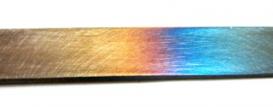Robert Boyle’s 1664 Experiments and Considerations Touching Colours is full of experiments and observations that “enquire seriously into the Nature of Colours, and assist in the Investigation of it.” Boyle was not interested in positing a complete theory of colors in this work, but rather with establishing certain “matters of fact” concerning color. However, without such a theory Boyle runs into the problem of knowing when and to what extent color signifies important, “inward” properties of materials, or indeed when color is at all important in observations and experiments.
Among Robert Boyle's early works were his Two Essays Concerning the Unsuccessfulness of Experiments, which first appeared in his 1661 collection Certain Physiological Essays. These are among the first detailed investigations of the problem of replicating experiments, or according to Boyle, “Contingencies to which Experiments are obnoxious." Boyle points to color as a particularly vexing issue in judging how genuine both ingredients and the material outcomes of experiments might be, as well as the correctness of experimental procedure. Many of these same issues are also present in Experiments Touching Colours three years later. This project highlighted how, in both publications, Boyle offers two examples of how craftsmen have managed to master their materials and generate products reliably: the keen attention to color by steelworkers, and the skills and techniques of dyers, particularly in producing the highly desirable scarlet color from cochineal (a process that greatly increased England's competitiveness in dyeing in the seventeenth century). By turning to craft work, Boyle was knowingly harnessing knowledge resulting from long processes of experimentation and trial and error, and this gave him one key way of both avoiding the contingencies of experiment as well as determining “matters of fact” in issues related to color.

